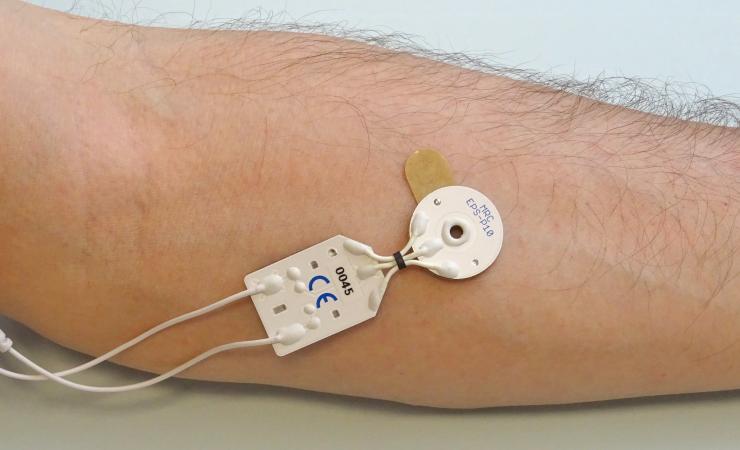More people suffer from chronic pain than you may think. According to Pain Alliance Europe, 1 in 5 Europeans suffer from some form of chronic pain. Researchers wanting to test new ways to alleviate this pain must first find a way to safely reproduce it.
One way is to attach a small electrode to an area of skin and apply a small current; this increases a person’s sensitivity to ‘pinprick’ tests for pain. This ‘high frequency stimulation’ (HFS) technique is useful when developing pain medication, as the increased sensitivity is thought to be a key part that leads to chronic pain in patients, such as persistent post-surgical pain.
Researchers and engineers from Germany and Belgium have now developed a device that can recreate this sensitivity (known as hyperalgesia) more accurately and consistently.
Medical researchers and clinicians at the University of Heidelberg in Germany and the Catholic University of Louvain in Belgium shared their ideas with medical technology firm MRC Systems GmbH based in Heidelberg in Germany, which then developed the prototype. The properties and effects of the electrode were then evaluated by other collaborators in Denmark, Italy, France and the UK. The group are part of the Innovative Medicines Initiative (IMI) project IMI-PainCare, which aims to improve ways to detect indicators of pain in healthy subjects and animals.
The electrode consists of a cathode with 10 thin tungsten pins arranged in a circle, and an anode with a flat surface. Its special design means the electrode can apply low currents with a high current density within a small region of the skin. The electrode can be placed at different parts of the body while avoiding any critical nerves and blood-vessels.
When the electrode is fixed to the skin, five bursts of electrical pulses are delivered through the electrode contacts. The entire procedure lasts less than one minute, and was shown to induce a consistent increase in pinprick sensitivity beyond the electrode. The sensitive area gradually decreases in size over four hours, providing enough time for assessing treatment effects.
The researchers say the electrode requires minimal mechanical pre-conditioning. It also avoids common ways a test may be spoiled, for example sweating under the electrode when fixing it against the human skin for several hours.
The pilot testing resulted in a small electrode that can be used with other instruments to investigate hyperalgesia due to central sensitisation, mainly with ‘PinPrick’ stimulators. MRC Systems GmbH has also developed a model of the electrode which can be used during magnetic resonance imaging (MRI).
The HFS electrode is now on the market with the brand name “EPS-P10” (P10 denotes the 10 pins which carry the current). The researchers expect that they can use the electrode to complete four clinical trials focusing on different biomarkers as part of the IMI-PainCare project. Meanwhile MRC Systems GmbH has already started to market the electrode and is awaiting the outcomes of the clinical trials and the proof of the high-frequency electrode as a new standard to produce a well-defined hyperalgesia.
IMI-PainCare is supported by the Innovative Medicines Initiative, a partnership between the European Union and the European pharmaceutical industry.
